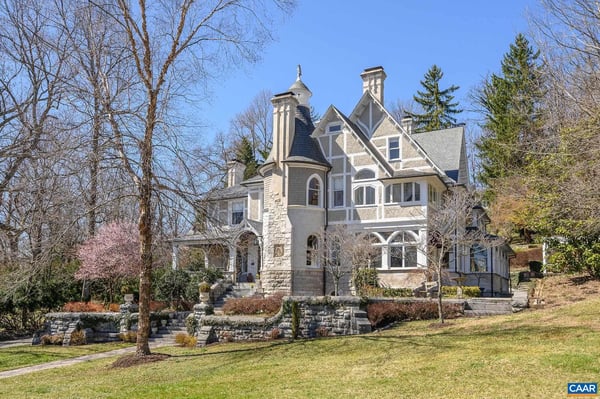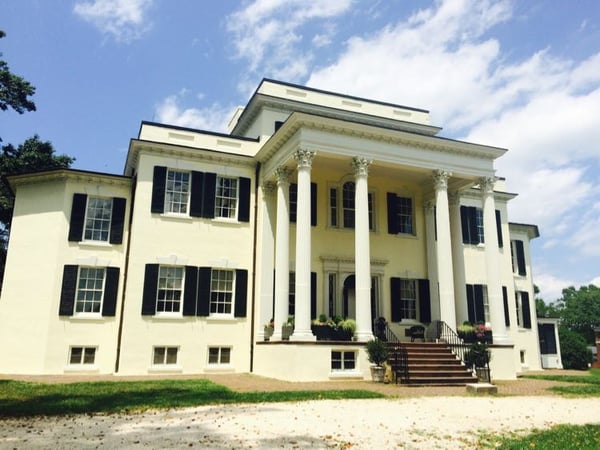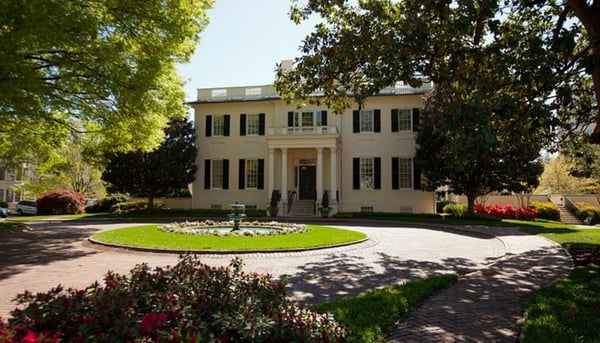
From Old Town Alexandria to Leesburg’s brick-lined streets, Virginia is rich with history — and that history lives not just in museums or landmarks, but in the homes and neighborhoods we see every day.
For homeowners lucky enough to live in one of these older properties, maintaining historic charm can be both a joy and a challenge. Fortunately, Virginia’s Historic Rehabilitation Tax Credit (HRTC) program helps make that stewardship more affordable — offering significant financial incentives to those who preserve the Commonwealth’s architectural legacy.
At Design Builders, we’re passionate about craftsmanship, tradition, and thoughtful renovation. Whether it’s restoring a porch, repairing a deck, or re-imagining an outdoor living space, these tax credits can make it easier for homeowners to honor their home’s past while investing in its future.
What Is Virginia’s Historic Rehabilitation Tax Credit?
Established in 1997 and managed by the Virginia Department of Historic Resources (DHR), the state’s Historic Rehabilitation Tax Credit provides a 25% state income tax credit for qualified expenses associated with rehabilitating historic properties.
It’s one of the most generous programs of its kind in the nation — and it’s had a real impact. Since its inception, the program has spurred more than $6.8 billion in private investment and issued over $1.7 billion in credits, helping thousands of Virginians restore historic homes and communities.
Homeowners can even combine (or “stack”) this state credit with the federal historic rehabilitation tax credit, which adds another 20% for eligible projects. That means as much as 45% of approved rehabilitation costs can be recovered through tax incentives — a major financial advantage.

Who Is Eligible?
To qualify, a property must be recognized as a “certified historic structure.” That means it’s either:
-
Listed on the Virginia Landmarks Register or the National Register of Historic Places, or
-
A contributing building within a designated historic district, or
-
Certified by DHR as eligible for listing on those registers.
This ensures that the program supports genuine preservation — not just renovation.
For owner-occupied homes, rehabilitation costs must exceed 25% of the structure’s assessed value before the project begins. For income-producing properties, that threshold is 50%.
For example, if your historic home has a building value of $200,000, you’d need at least $50,000 in qualified work to meet the state’s “material rehabilitation” requirement.

What Type of Work Qualifies?
The key word in this program is “rehabilitation.” The goal isn’t to remodel or modernize, but to restore and preserve.
Eligible work typically includes:
-
Structural repairs (walls, foundations, and roofs)
-
Window and door restoration using original or historically appropriate materials
-
Masonry repairs and repointing
-
Restoration of porches, decks, or exterior architectural details
-
Upgrades to electrical, plumbing, or HVAC systems that preserve the building’s integrity
-
Engineering or architectural fees directly tied to the project
Work that doesn’t qualify includes:
-
Additions or expansions
-
New construction
-
Interior aesthetic remodels
-
Landscaping or site work not related to the building itself
As a builder, Design Builders often works on projects that fit squarely within these guidelines — especially exterior renovations that respect the character of a home while adding long-term structural stability and comfort.
How the Application Process Works
The Virginia program follows a three-part application process, coordinated through the DHR:
-
Part 1 – Evaluation of Significance
Determines whether the property qualifies as historic. -
Part 2 – Description of Rehabilitation
Details the proposed work. Applicants must describe materials, methods, and plans for review. -
Part 3 – Certification of Completed Work
Submitted after completion with documentation, invoices, and before-and-after photos.
All work must comply with the Secretary of the Interior’s Standards for Rehabilitation, ensuring the home’s historic features are maintained.
The process typically takes 30–45 days per review stage, so planning ahead is key. Homeowners must also file Part 3 within one year of project completion to claim the credit.

Carry-Forward and Program Caps
If your credit exceeds your tax liability, Virginia allows you to carry unused credit forward for up to ten years.
Beginning in 2025, the annual limit for any one taxpayer will rise from $5 million to $7.5 million — an acknowledgment of just how vital these projects are to the state’s economy.
For smaller residential projects, this carry-forward feature makes the program especially valuable: homeowners can spread the benefit over multiple tax years.
Why It Matters
Beyond the dollars, this program represents something deeper — a shared belief that what’s worth building is worth preserving.
Historic homes have character that can’t be replicated: handmade millwork, original masonry, aged timbers, and design proportions that speak to another time. These tax credits make it possible for homeowners to maintain that character, even as they update for modern living.
Preservation doesn’t mean resisting progress — it means building on what endures. That’s the same philosophy we bring to our outdoor living spaces, where form and function meet timeless design.
How Design Builders Can Help
Working within historic guidelines requires more than construction skill — it demands sensitivity to proportion, materials, and history.
Design Builders’ team understands how to design and execute projects that meet both your aesthetic goals and the state’s preservation standards. We can help homeowners:
-
Identify whether their home may qualify for the program
-
Coordinate with DHR to ensure documentation meets state requirements
-
Design and build outdoor spaces that complement, not compete with, historic architecture
If you’re considering work on a historic property in Northern Virginia — whether it’s porch restoration, deck reconstruction, or a full outdoor living addition — we can help you navigate the process and maximize your potential tax credit.
Preserve Your Home’s Story — and Save in the Process
Virginia’s Historic Rehabilitation Tax Credit gives homeowners a way to honor their property’s history while investing wisely in its future.
If you’re planning a restoration or exterior renovation, now is the time to explore your eligibility. Design Builders can help you plan, build, and document your project for lasting value — both financially and architecturally.
📞 Call: (301) 875-2781
📧 Email: info@designbuildersmd.com
🌐 Visit: www.designbuildersmd.com

